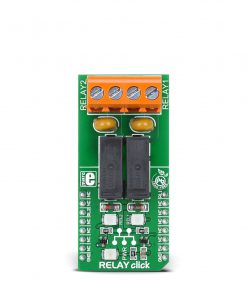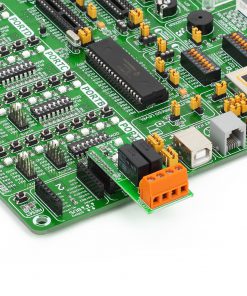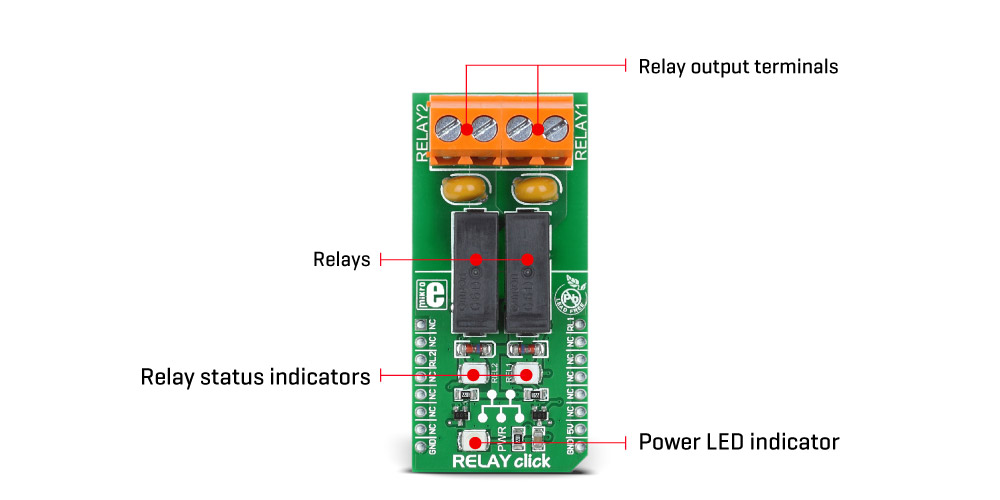Subtotal: R800.00
RELAY Click
R405.00 ex. VAT
RELAY Click is a compact add-on board with general-purpose relays that any host MCU can control. This board features two G6D1AASIDC5s, slim miniature relays from OMRON. The relays offer low power consumption in a small, lightweight package with PCB pin mounting, which in some cases allows socket mounting. It comes with a dimension of 17.5×6.5×12.5 millimeters (LxWxH) and an SPST-NO contact arrangement with a coil voltage of 3VDC, providing a maximum switching voltage of 125VAC/60VDC. This Click board™ makes the perfect solution for the development of controlling high-power applications and can also be used to activate various electromotors, switch on the lights, or power the entire embedded system.
RELAY Click is fully compatible with the mikroBUS™ socket and can be used on any host system supporting the mikroBUS™ standard. It comes with the mikroSDK open-source libraries, offering unparalleled flexibility for evaluation and customization. What sets this Click board™ apart is the groundbreaking ClickID feature, enabling your host system to seamlessly and automatically detect and identify this add-on board.
Stock: Lead-time applicable.
| 5+ | R384.75 |
| 10+ | R364.50 |
| 15+ | R344.25 |
| 20+ | R331.29 |

 MPU 9DOF Click
MPU 9DOF Click  EXPAND Click
EXPAND Click 

















